Carlos and I are both history buffs and we love visiting landmarks and historic places. This is why we joined forces with other travel bloggers to compile some of the must-visit historic sites on the East Coast of the U.S.
Please note that this list is intended to be bookmarked for future trip planning purposes. Even more so, it’s the perfect East Coast history road trip!
From Florida up to New York, these are some of the most amazing historic sites to visit to add to your historic sites bucket list.
- Historic Sites on the East Coast of the U.S.
- 1. Old Fort Jackson, Georgia
- 2. George Washington National Birthplace Monument, Virginia
- 3. Dry Tortugas National Park, Florida
- 4. Fort Zachary Taylor, Florida
- 5. Fort De Soto, Florida
- 6. Castillo de San Marcos, Florida
- 7. Fort Macon Historic Site, North Carolina
- 8. The Liberty Bell, Pennsylvania
- 9. Mt. Vernon, Virginia
- More Historic Sites to Visit on the U.S. East Coast
- 10. Colonial Williamsburg, Virginia
- 11. Fort Sumter National Monument, South Carolina
- 12. The Battery, South Carolina
- 13. Plimouth Patuxet, Massachusetts
- 14. Freedom Trail, Massachusetts
- 15. Hamilton Grange, New York
- 16. 9/11 Memorial & Museum, New York
- 17. Fort McHenry Monument, Maryland
- 18. Yale University, Connecticut
- 19. The United States Holocaust Memorial Museum, Washington D.C.
Disclaimer: Some affiliate links are placed in this content which means we receive a percentage of the revenue made from purchasing products via those links–at no extra cost to you. All of the opinions are our own. Thank you for supporting our blog!
Historic Sites on the East Coast of the U.S.
1. Old Fort Jackson, Georgia
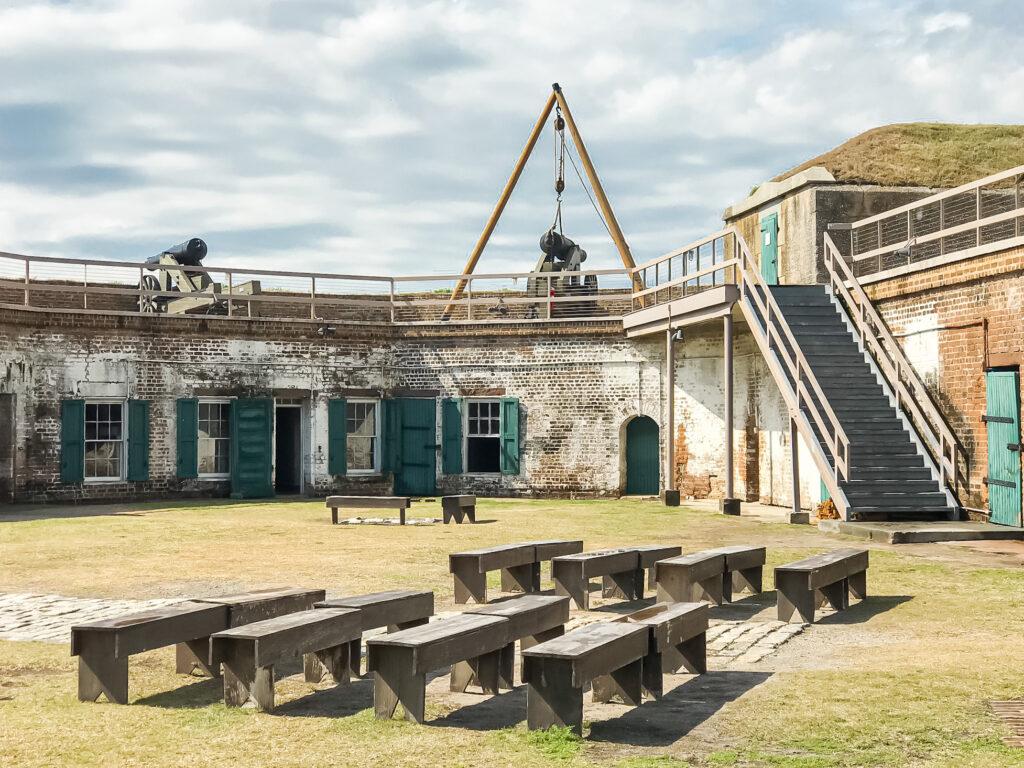
For our contribution to this list, I wanted to include one of my personal favorites. Old Fort Jackson, located in Savannah, is one of the historic attractions that you don’t want to miss!
This 1808 fort is among the oldest East Coast landmarks and was employed as a defense during the Civil War.
Visitors can enjoy a variety of activities, including daily cannon firings, demonstrations, and drills. Sidenote: I loved walking the grounds of this fort!
You will also love the amazing view of Savannah’s riverfront from its top. Open every day from 9 am – 5 pm with admission fees at $10 per adult and $7 per child.
🗺 EXPLORE: Check out some of the best historic tours in Savannah, Georgia.
2. George Washington National Birthplace Monument, Virginia
Contributed by Erin of Go Hike Virginia
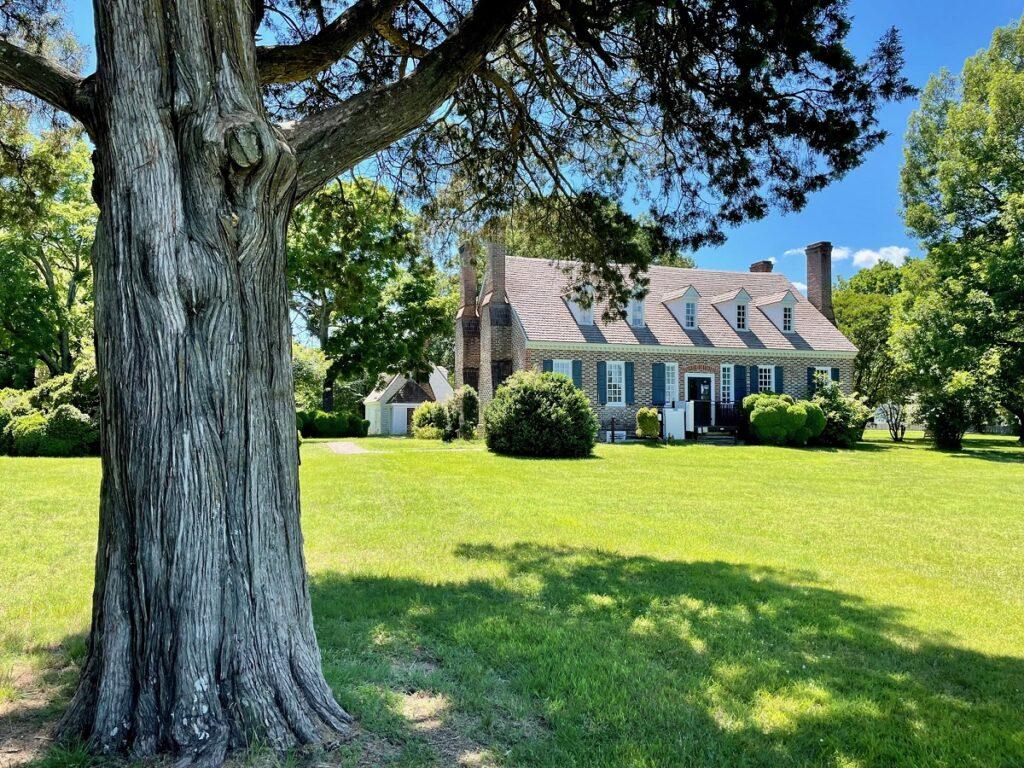
George Washington National Birthplace Monument sits on 550 acres of Popes Creek Plantation in Colonial Beach, Virginia. Our first president, George Washington, lived his first years of life here, making this one of the must-see historic sites on the East Coast. He lived here before the family moved to Mount Vernon, then later to Fredericksburg, Virginia.
There are no original structures, but visitors will find a Memorial House Museum, a garden from the Colonial Revival era (1860-1940), and a farm building, even sheep, cows, and hogs. There are also two nature trails, picnic areas and a sandy beach area for fishing, canoeing, and kayaking.
The two easy hiking trails are the Nature Trail and the Dancing Marsh Trail. It’s easy to cobble these two trails together to create a nearly 2.0-mile loop for a walk around the perimeter of the one-time plantation. Several well-placed benches allow visitors to relax and enjoy the views.
For families with young children, pick up a Junior Ranger activity booklet in the visitor center. Kids can earn a badge and be sworn in as a Junior Ranger by completing several activities, such as a scavenger hunt and coloring pages.
There is no fee to visit the George Washington National Birthplace Monument, and parking is plentiful. From any parking space, you’re not more than a few steps from the visitor center and on-site restrooms.
3. Dry Tortugas National Park, Florida
Contributed by Victoria of Florida Trippers
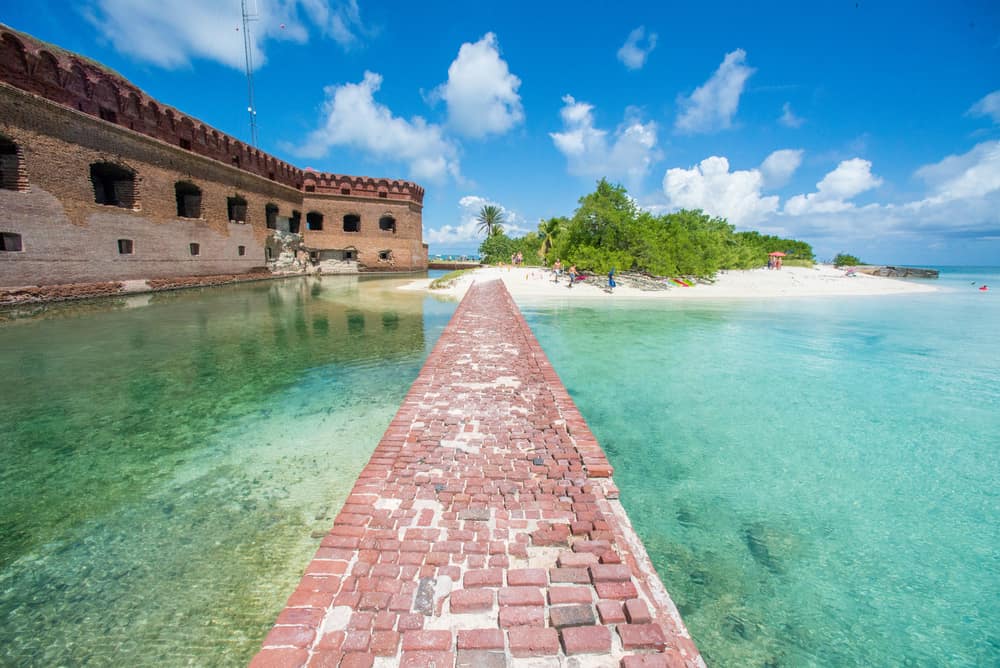
Looking for one of the most historic sites on the East Coast of the USA? If so then you can’t beat Dry Tortugas National Park in Florida.
See, this hidden gem sits 70 miles off the coast of Key West. And because of its remote location, this 100-square-mile park, featuring seven unique islands, rarely receives more than 60,000 visitors annually.
So, you’ll have the place all to yourself as you explore the remains of historic Fort Jefferson. In fact, it was a haven for ships during the 19th century and allowed them to resupply, refit, and enjoy refuge behind the walls of the fort before heading back out into the Caribbean.
Therefore, after visiting the fort, be sure to go snorkeling in the pristine waters around the Moat Wall before relaxing at South Swim Beach and enjoying the view.
Next, go snorkeling at Garden Key before grabbing a kayak and heading out to Loggerhead Key to see the turtles there. However, to get to the park, you’ll need to board the Yankee Freedom III ferry from Key West.
Tickets cost around $190 per person and allow you to enjoy a two-hour ride to the park. And while the price is a bit high, lunch is included and the journey is quite picturesque too.
KEY WEST TRAVEL TIP: Finish your day itinerary with a cruise dinner or a sunset sail.
4. Fort Zachary Taylor, Florida
Contributed by Victoria from Guide Your Travel
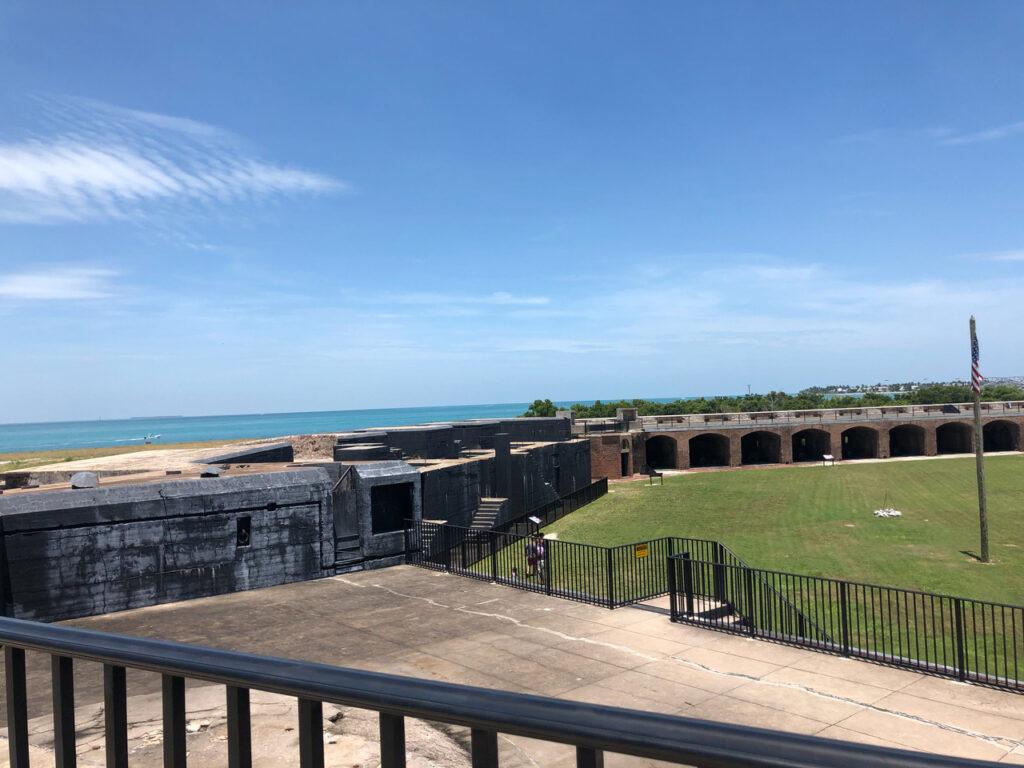
Fort Zachary Taylor is a historic landmark located in Key West, Florida, that is a must-visit for anyone interested in history or outdoor recreation.
The fort was built in the mid-1800s to defend the country’s southern coastline and played a significant role in several wars, including the Civil War and the Spanish-American War.
Today, visitors can explore the fort and its surroundings, which include hiking trails, picnic areas, and a stunning beach. The hiking trails wind through the surrounding vegetation and offer stunning views of the coastline and the fort itself.
Visitors can also swim, snorkel, or relax on the sandy beach, which is one of the most beautiful in Key West.
Parking at Fort Zachary Taylor is limited, but there is a parking lot located near the entrance of the park.
The fee for parking is $2.50 per hour or $6 per day. Additionally, there is an entrance fee to the park, which is $2.50 per person for pedestrians or $8 per vehicle.
Visitors to Fort Zachary Taylor can learn about the fort’s history by taking a guided tour or exploring the exhibits and artifacts on display in the museum. The fort also hosts special events throughout the year, such as reenactments and living history displays, which bring the site’s history to life.
In addition to Fort Zachary Taylor, many other attractions in Key West are worth visiting, such as the Ernest Hemingway Home and Museum, the Key West Butterfly and Nature Conservatory, and the Southernmost Point Buoy.
Whether you’re interested in history, outdoor recreation, or simply relaxing on the beach, Fort Zachary Taylor and Key West have something to offer everyone.
5. Fort De Soto, Florida
Contributed by Candice from Exploring the Gulf
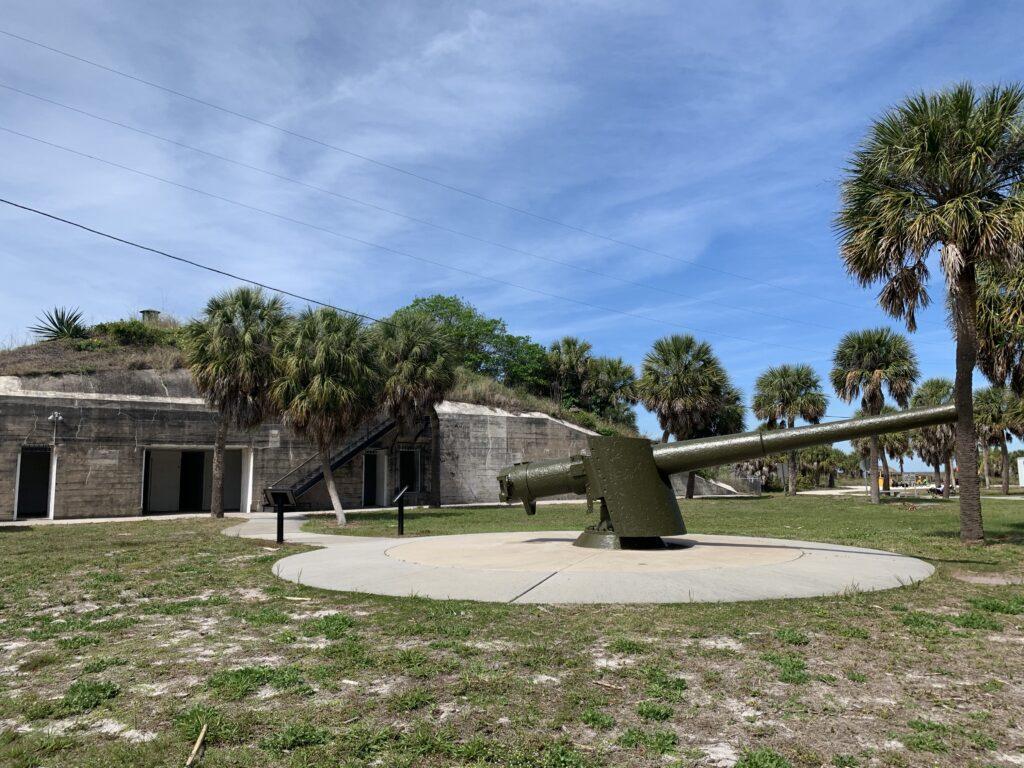
The historical influence of Fort De Soto in Florida comes from its original purpose, as a military hub, serving defense and communication purposes in the early 1900s. The fort ruins can still be explored today.
History aside, Fort De Soto Park’s North Beach has been nationally hailed as one of the best beaches for families. If you’re traveling with kids, the beach water temperature should be comfortable.
They will be in paradise, splashing along the beach while finding colorful seashell treasures. The pirate ship playground is also a hit with the youngsters.
Fort De Soto is also a prime place for spotting a wide variety of wildlife. If you’re interested in going on an expedition of your own, this area is a fun spot to rent a kayak and explore the paddling trails through the mangroves.
Manatees, turtles and various birds call this area home, so you never know what you might come across!
Fort De Soto features a seven-mile paved trail that is popular with runners and cyclists. If you’d rather explore on foot, south of North Beach are several unpaved nature trails just waiting to be explored.
There is a $5 per car parking/entrance fee, but that is a small price to pay for spending a day in the sun at such a beautiful historic place.
6. Castillo de San Marcos, Florida
Contributed by Kristin from Growing Global Citizens
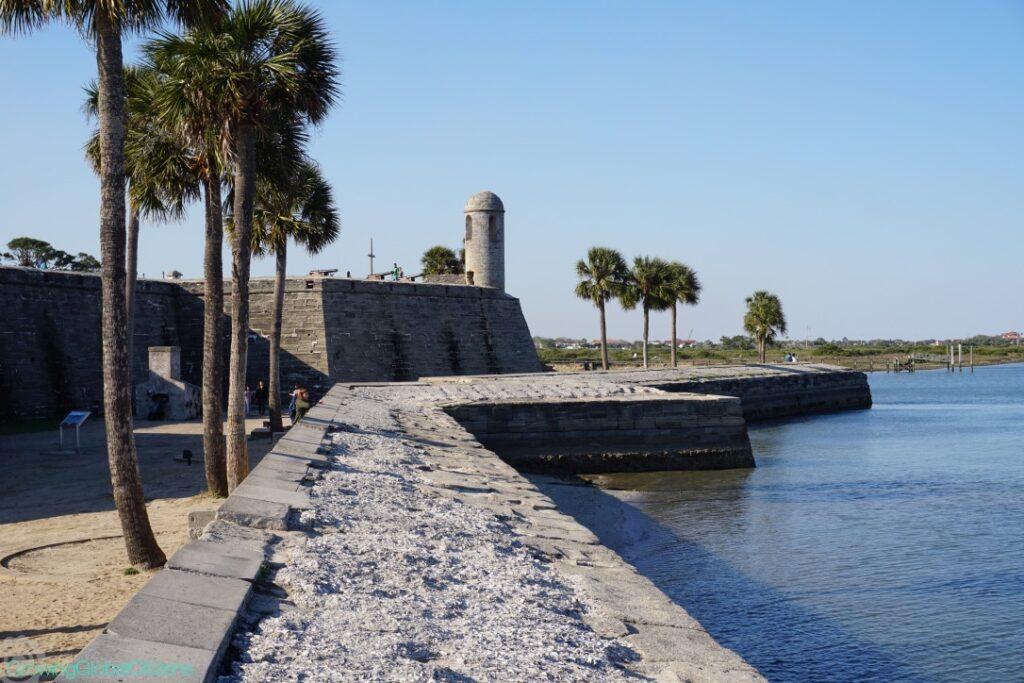
The city of St. Augustine on Florida’s northwest coast is a treasure trove of historic sites. St. Augustine was founded in 1565 by the Spanish and is the oldest permanent European settlement in the continental U.S.
There are several places of historical importance to visit, like the Government House, which has photos and exhibits about the city of Saint Augustine, and the old Alcazar Hotel, which is now a museum.
One of the most famous historic sites on the East Coast is Castillo San Marcos or Saint Mark’s Fort.
This National Monument is over 450 years old and has been under Spanish, British, and American rule.
The fort is very popular with visitors because of its well-preserved ramparts and lively historical reenactments.
When I visited, dozens of costumed reenactors told me all about their lives at the fort before conducting a cannon firing. Check which events are being held before you visit.
The fort is easy to get to, as it is in the center of town and right on the water. Parking can be difficult to find in St. Augustine. If you can’t fit in the small lot right in front of the fort, the main St. Augustine city lot is within walking distance.
Admission is valid for a week and is $15 for adults, with children under 16 admitted for free. Read more about how to visit Castillo San Marcos.
7. Fort Macon Historic Site, North Carolina
Contributed by Jessica from Past Lane Travels
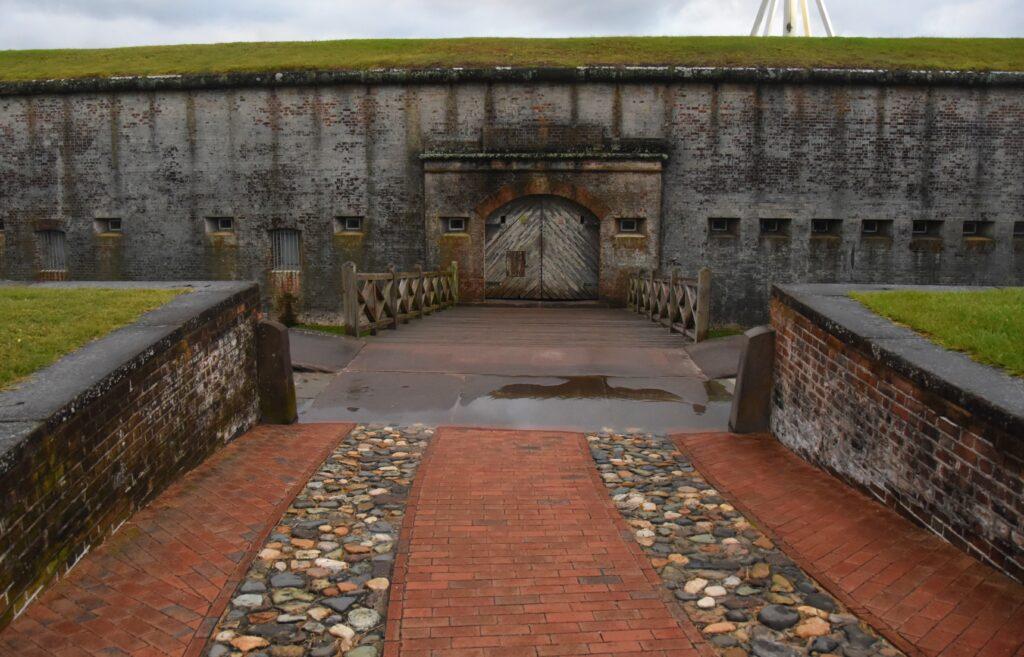
If you’re planning a vacation on the “Crystal Coast” of North Carolina, don’t forget to add the historic site of Fort Macon State Park to your must-see list.
Built between 1826 and 1834, Fort Macon’s original purpose was to guard the coastline against plundering pirates and foreign adversaries. It ended up being used during the Civil War, the Spanish-American War, and World War II.
Need somewhere to take the kids on a cloudy day? There is no cost to explore the entire five-sided fort, including 26 vaulted rooms, powder magazines, and artillery emplacements. If you plan, you might even get to see a live cannon firing demonstration.
By the way, Fort Macon consists of 2,379,546 bricks – more than any other U.S. fort.
This fort, one of the most amazing historic sites on the East Coast, is right on the beach, which is a great place for swimming, shell hunting and dolphin watching. There are also an estimated 302 different species of birds in Fort Macon Park.
You can do even more exploring on the park’s hiking trails. There is a short quarter-mile nature trail with informational signs about plants and animals, as well as a longer nature trail that is about 3.2 miles round trip.
Parking is free and plentiful. Bring water and bug repellent.
The fort is only a few miles from the charming seaside town of Beaufort, where you can visit the Old Burying Ground Cemetery. A young girl who died at sea in the 1700s is buried in a rum keg here.
8. The Liberty Bell, Pennsylvania
Contributed by Rebecca from Veggies Abroad
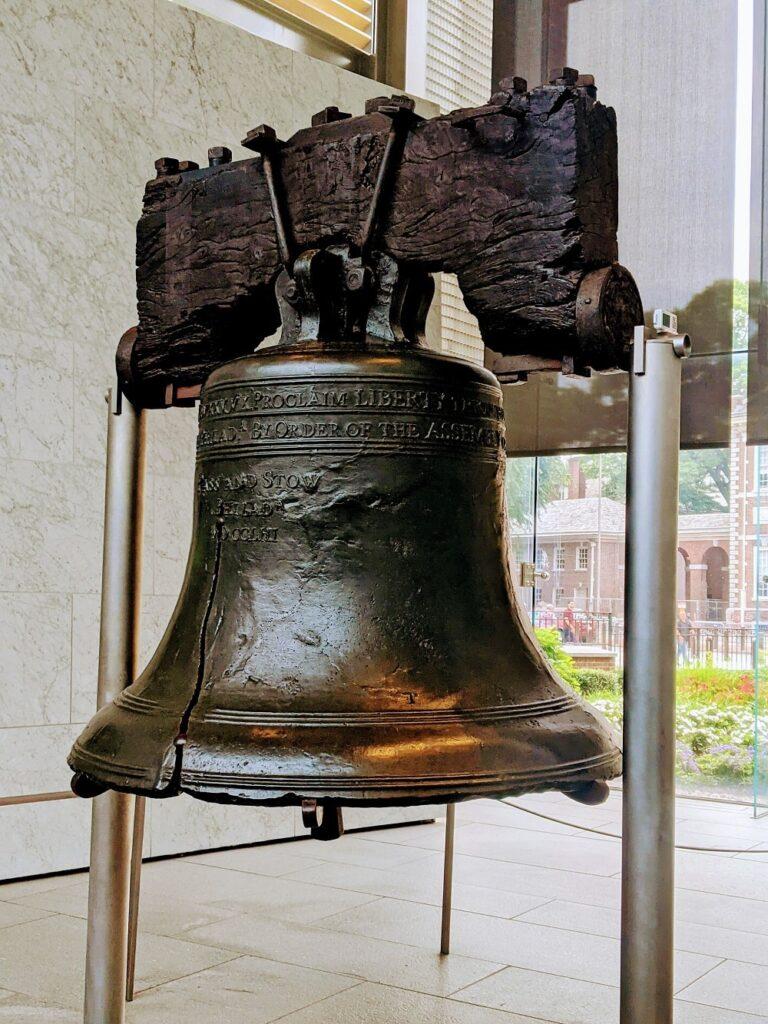
The State Bell, better known as the Liberty Bell, has long been an iconic symbol of American independence and freedom.
The bell was first hung in Independence Hall in 1751, and upon ringing, it cracked, forcing the metal workers to create a new bell (it actually cracked three times before being retired).
The bell was used to summon lawmakers and townspeople for important news, including the reading of the Declaration of Independence.
The bell was inscribed with “Proclaim liberty throughout all the land unto all the inhabitants thereof,” which abolitionists, suffragists, and civil rights leaders used as a rallying cry for freedom.
Today, a replica of the bell hangs proudly in the Liberty Bell Center, around the corner from Independence Hall. Admission into the center is free, and it’s open daily from 9 AM – 5 PM.
In addition to visiting the bell on your own, you can learn more about its history on one of the many historical walking tours. These are terrific for learning about Philadelphia’s history and provide an overview of other historical sights and museums that you should check out.
After checking out the Liberty Bell Center, walk over to the Reading Terminal for a snack or lunch. It’s home to Philly’s only vegan deli, Luhv. If that doesn’t interest you, there are many other fantastic restaurants, many with vegan options, in Philadelphia.
9. Mt. Vernon, Virginia
Contributed by Chelsea from Adventures of Chels
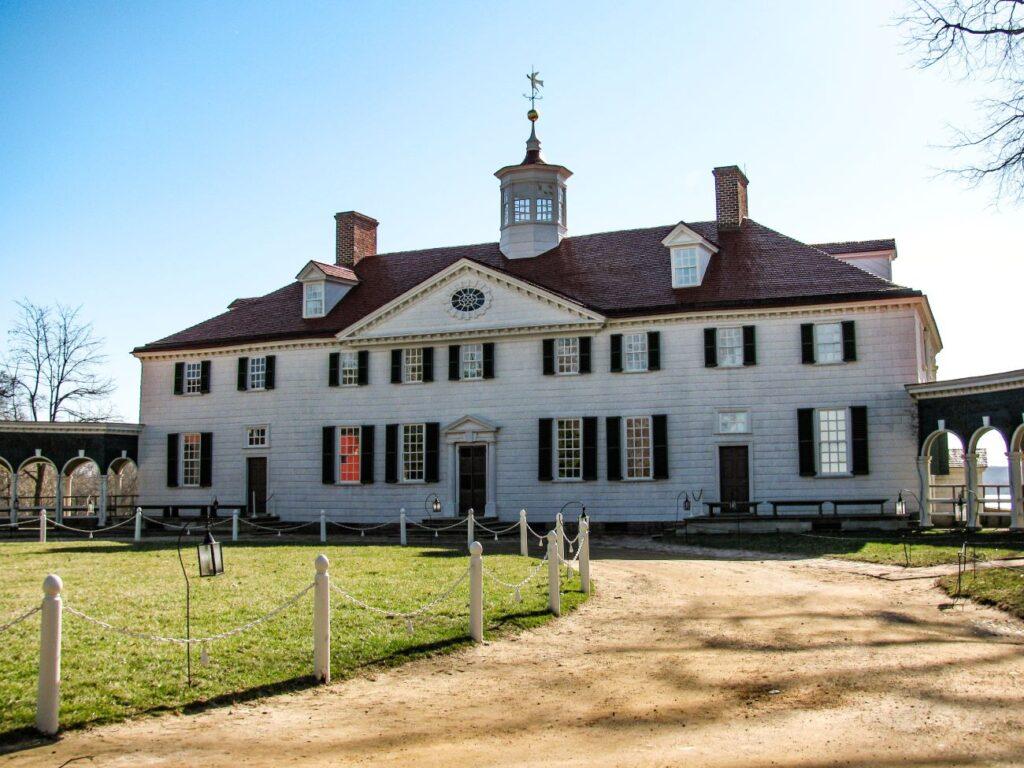
A historic site on the U.S. East Coast that shouldn’t be missed is Mt. Vernon —the home of President George Washington, located just 30 minutes away from Washington DC.
The Washington family owned the property from 1674 until 1761, when George Washington became the sole owner. This is the residence he and his wife, Martha, lived in. The estate was a plantation in which slaves worked to build and maintain the property.
In his will, which was written a few months before his passing, Washington left specific instructions regarding the emancipation of the slaves he owned. This history is respectfully taught at Mt. Vernon today.
Mt. Vernon —one of the East Coast landmarks- sits on a hill that overlooks the Potomac River. The outer grounds can be explored without a tour. This includes the outer buildings, farms, trails, tomb, Museum, and Education Center.
Entrance fees to the grounds and outdoor areas of Mt. Vernon are $28 for adults (12+ years), $15 for youth (6-11 years) and free for children (0-5 years). It’s an additional $2 per ticket to tour the mansion itself.
Be sure to book tickets online in advance as entry times to enter the mansion are required and can fill up. Free visitor parking is available at the site. Enjoy your visit to historical Mt. Vernon!
More Historic Sites to Visit on the U.S. East Coast
10. Colonial Williamsburg, Virginia
Contributed by Melissa from Parenthood and Passports
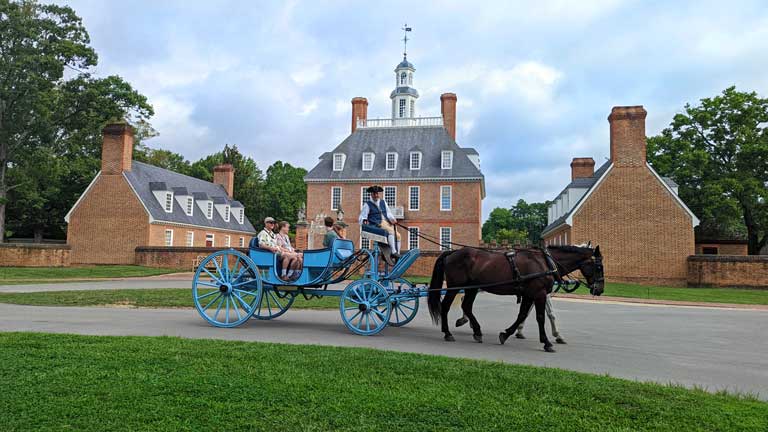
Located in southeast Virginia, Colonial Williamsburg is the world’s largest living history museum. The historic area covers 300 acres and includes more than 88 original buildings dating back to colonial times before the US became a country.
This fascinating historic site in Virginia recreates life in a colonial town and offers visitors a chance to step back in time and experience what life was like in the 18th century.
Historic interpreters dressed in period clothing roam the streets, conversing with visitors in character and demonstrating colonial-era trades and crafts such as wig-making, woodworking, and silversmithing.
One of the most popular things to do in Williamsburg, Virginia, for families, Colonial Williamsburg is an educational experience and a hands-on history lesson.
You can tour historic homes, including the Governor’s Palace, and step inside authentic and restored buildings like the original Colonial Capitol Building.
Through its programming and exhibits, this historic site helps visitors understand the complex history of colonization in the Americas and includes tours that address even the ugliest side of American history, like slavery.
While tickets can be pricey at around $50 per person if you want to enter the buildings, Colonial Williamsburg is well worth it! It is an immersive experience where you’ll literally walk the same streets George Washington did in the early years of the nation’s beginning.
RECOMMENDED TOUR: Go back in time and explore five historic sites in this tour of America’s Historic Triangle, beginning with Colonial Williamsburg.
11. Fort Sumter National Monument, South Carolina
Contributed by Rachel from Means to Explore
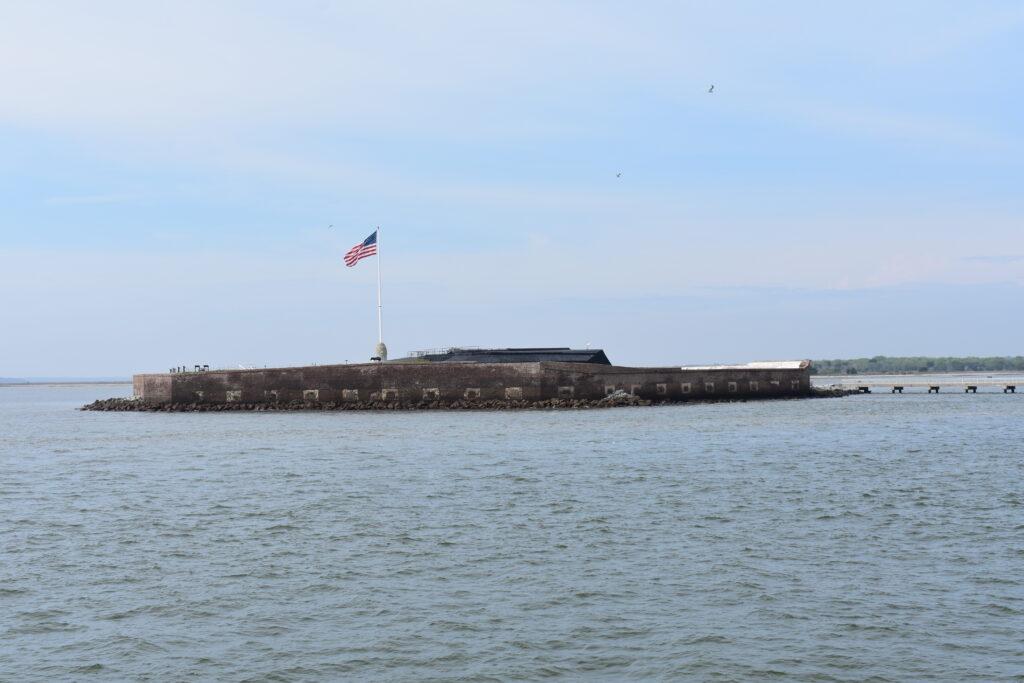
Fort Sumter in South Carolina’s Charleston Harbor is one of the most important historical sites on the East Coast. The first shots of the American Civil War were fired at Fort Sumter, beginning the long-overdue yet horrific fight to end slavery in the United States.
After the Civil War, Fort Sumter remained in service for almost another century, defending this important Southern port city through the end of World War II.
To get to Fort Sumter National Monument, you have to take an authorized concessioner ferry boat with Fort Sumter Tours.
There is technically no National Park Service entrance fee for Fort Sumter, but you can’t get there without the ferry, for which you have to pay to reserve a ticket.
Note that National Park Passes aren’t accepted by the concessioner. Tickets are $35 per adult. Ferries leave from two locations on the Cooper River: the Patriots Point dock on the Mount Pleasant side and the National Park Service dock at Liberty Square on the Charleston side.
Parking at Patriots Point is $5 per vehicle per day. The best parking for Liberty Square is the Aquarium Wharf parking garage for $2 per hour or $18 daily max.
Charleston is steeped in history, and there are plenty of things to do in Charleston once you’re done exploring Fort Sumter. Take a walking tour or carriage tour of Charleston’s downtown historic district. Alternatively, head to the beaches for a day of sunbathing or explore one of Charleston’s historic plantations.
12. The Battery, South Carolina
Contributed by Sam from Find Love & Travel
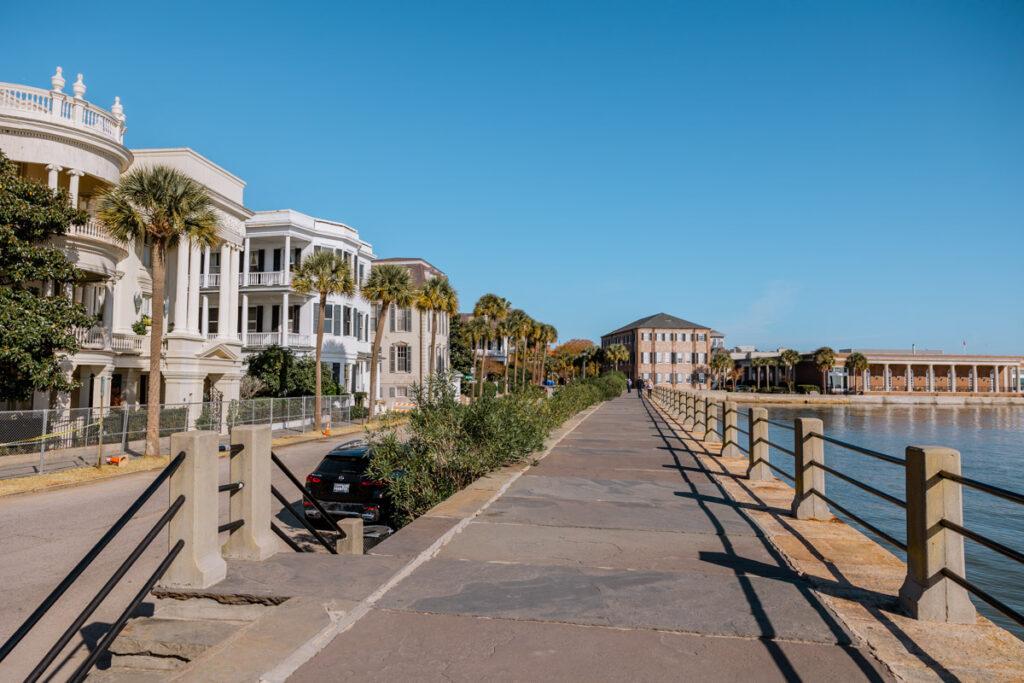
A must-visit historic site that resides on the East Coast of the USA is The Battery, located in Charleston, South Carolina. In fact, it is actually one of Charleston‘s most visited spots and one of the best places for a scenic walk!
The battery is a seawall that was built to protect the city from intruders coming by sea back in the 1750s. It was built using large boulders and stone at the time and was crucial in protecting Charleston during the Civil War.
Aside from the historical aspect, the views that can be seen here are what captivate tourists to add this elevated walking path to their Charleston itinerary, and keep locals coming back time and time again.
From The Battery, you can see Sullivan’s Island lighthouse, Fort Sumter (where the first shots of the Civil War happened), and amazing sunset views.
The mansions that line The Battery are not only stunning, but there is also a unique story to tell. Take a short stroll around the area and find charming alleys, historic mansions, and White Point Garden, which is another historic landmark in South Carolina.
Visiting The Battery is completely free and you can find street parking along the Battery or near White Point Garden.
That being said, Charleston, South Carolina, is very walkable and includes other must-visit historic sites on the East Coast like Drayton Hall and the McLeod Plantation Historic Site. You will be able to easily walk straight from your hotel to the destination and into Charleston’s panoramic views!
Save it for later!

13. Plimouth Patuxet, Massachusetts
Contributed by Amanda from Hey! East Coast USA
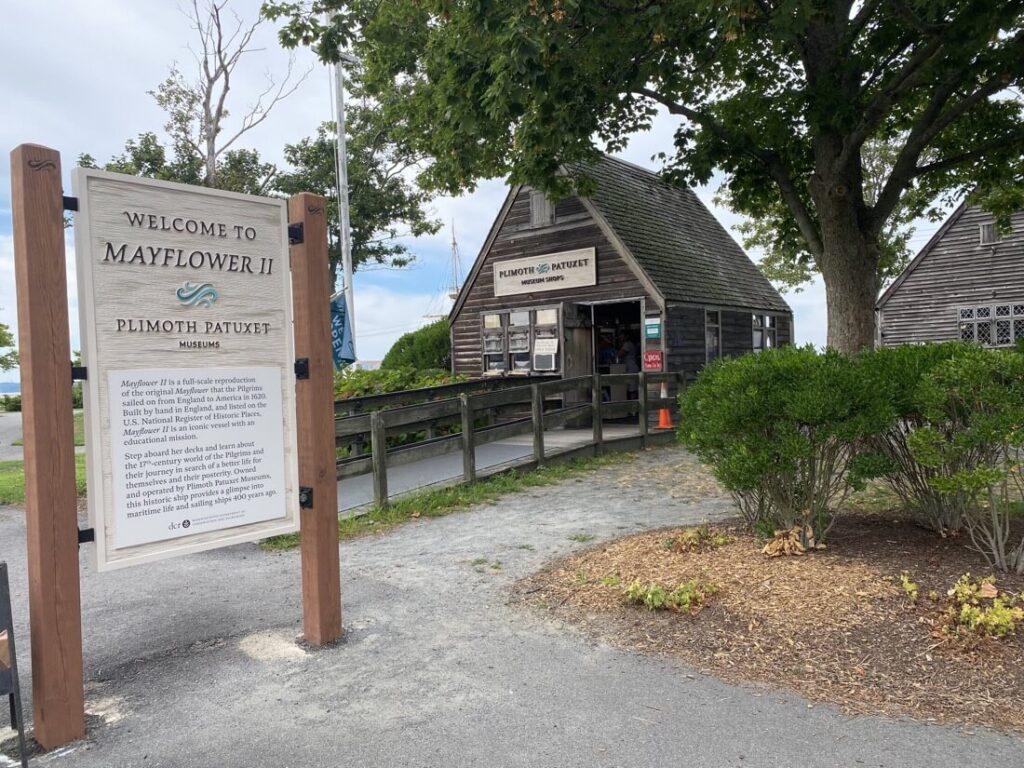
Plimoth Patuxet is one of the oldest sites from the Colonial era that can be visited today. Located in Plymouth, Massachusetts, Plimoth Patuxet is actually a group of museums and sites where visitors can learn about the European colonists who arrived on the Mayflower more than 400 years ago.
There is much to unpack at this location, which is reflected in the name itself.
Formerly known as Plimoth Plantation, the name was changed to Plimoth Patuxet in July 2020. Sharing the stories and perspectives of the Indigenous Wampanoag has been a part of this living history museum for years, but the name change reflects the two sides of this story that bear equal importance.
Visit a recreated 17th-century English village where actors in full costume demonstrate what life was like at the time. Also visit the Wampanoag Homesite, where you can speak to museum guides and professionals from the Wampanoag Nation who can talk about life in the 17th Century through today.
Parking is free here, just note that the museum is spread over 40 acres and not all areas are ADA-accessible.
You can also go to downtown Plymouth to visit the Mayflower II, which is on the National Register of Historic Places (and also not ADA-accessible). Parking in Plymouth Center is typically by meter, or you can use one of the downtown lots.
There are tons of other great things to do in Plymouth while you’re there, so don’t rush in and out!
You’ll have to drive between the locations and you can purchase a combination pass for both Plimoth Patuxet and the Mayflower II for $39.95.
14. Freedom Trail, Massachusetts
Contributed by Francesca from Home Room Travel

One of the best historic sites on the East Coast lies in Boston: The Freedom Trail. The Freedom Trail is a 2.5-mile path that winds through Boston and connects many historical sites. These sites are all a part of Boston National Historical Park.
The Freedom Trail is a must-visit stop in Boston, especially for those who love history. By stopping at the sites along the trail, visitors really get a feel for what it was like in the colonial and American Revolutionary eras.
The first stop along the Freedom Trail is the Bunker Hill Monument. Here, visitors can learn about the Battle at Bunker Hill and how it contributed to the American Revolution.
Other popular stops along the Freedom Trail include the Massachusetts State House, the Granary Burial Grounds, the Old State House, the Boston Massacre Site, the USS Constitution, and the Boston Common.
There is no need for a car when visiting Boston and the Freedom Trail, as visitors can walk or take the metro everywhere. Many of the sites along the Freedom Trail are free, but a few require a small fee. Nevertheless, you can still see the majority of the sites and not have to pay any entrance fees!
15. Hamilton Grange, New York
Contributed by Tamar from World by Weekend
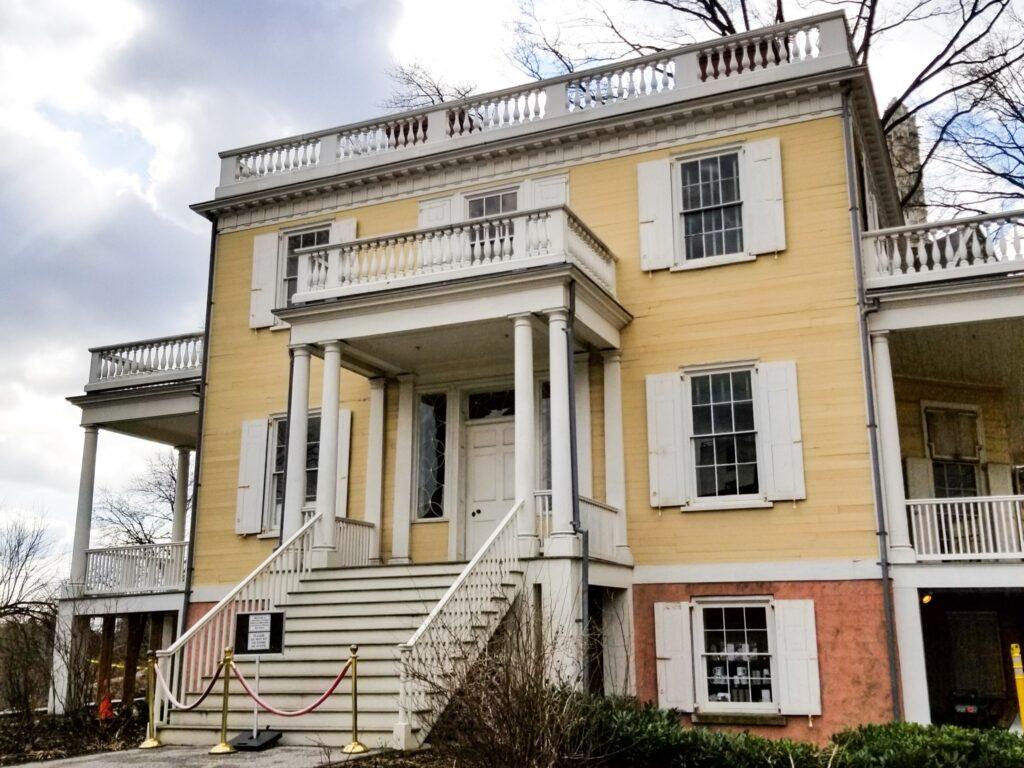
Located in the Hamilton Heights neighborhood of upper Manhattan is Hamilton Grange, the country home of Alexander Hamilton, one of the founding fathers of the United States of America.
Hamilton built the home in 1802 as an escape from the bustle of city life. While it’s now surrounded by apartment highrises, it’s hard to believe that this part of Manhattan was once rural farmland.
Unfortunately for Hamilton, he only lived in the house for two years before his untimely death in 1804.
Hamilton Grange is a must-visit historic sight on the East Coast of the US because of its ties to one of the most influential people in early US history.
Alexander Hamilton was instrumental in the push toward independence from Britain. He also helped write the Federalist Papers, which promoted the ratification of the Constitution. At Hamilton Grange, you can learn about his legacy and impact at the onsite museum.
You can also take a guided tour of the home and learn about the personal life of this historic figure, who, along with his wife, raised 8 children.
Hamilton Grange National Memorial is part of the National Park Service and is free to enter. Street parking in the neighborhood is hard to come by. The best way to reach Hamilton Grange is via bus, subway, or taxi.
RECOMMENDED TOUR: Go behind the scenes of the Basilica of St. Patrick’s Cathedral in this tour of the New York Catacombs.
16. 9/11 Memorial & Museum, New York
Contributed by Martha from May Cause Wanderlust

One of the most significant events in US history is the terrorist attack of September 11th, 2001. For this reason, many visitors, and certainly most first-time visitors, will include a visit to the 9/11 Memorial & Museum as part of their New York City itinerary.
This historic site marks the day when a coordinated attack was launched against the United States, and four commercial planes were hijacked and flown into significant buildings. 2,977 innocent people were killed, and in New York City, the Twin Towers of the World Trade Center were both destroyed.
The 9/11 Memorial & Museum contains a museum exhibition that gives a deeper understanding of 9/11, the lead-up to the attack, and its ongoing impact.
The memorial is outside: on the footprint of what was the Twin Towers, there are now two square pools.
With the names of all 2,977 victims engraved on the marble around them and water cascading down into the sunken pools, the pools are an elegant and evocative monument to the fallen buildings and those who died.
There’s also Survivor Tree, a pear tree that, against all odds, survived the terror attacks.
In place of the two towers, One World Trade Centre (also known as Freedom Tower) was built and opened in 2014. The One World Observatory at the top offers an elevated view over Manhattan and the Hudson River.
And if you want to see what else is near the Memorial, consider some of the landmarks in Lower Manhattan, including Wall Street and the New York Stock Exchange, the Charging Bull statue, Battery Park, and the Staten Island ferry, from which you can see the Statue of Liberty.
17. Fort McHenry Monument, Maryland
Contributed by Lola from Deyewa
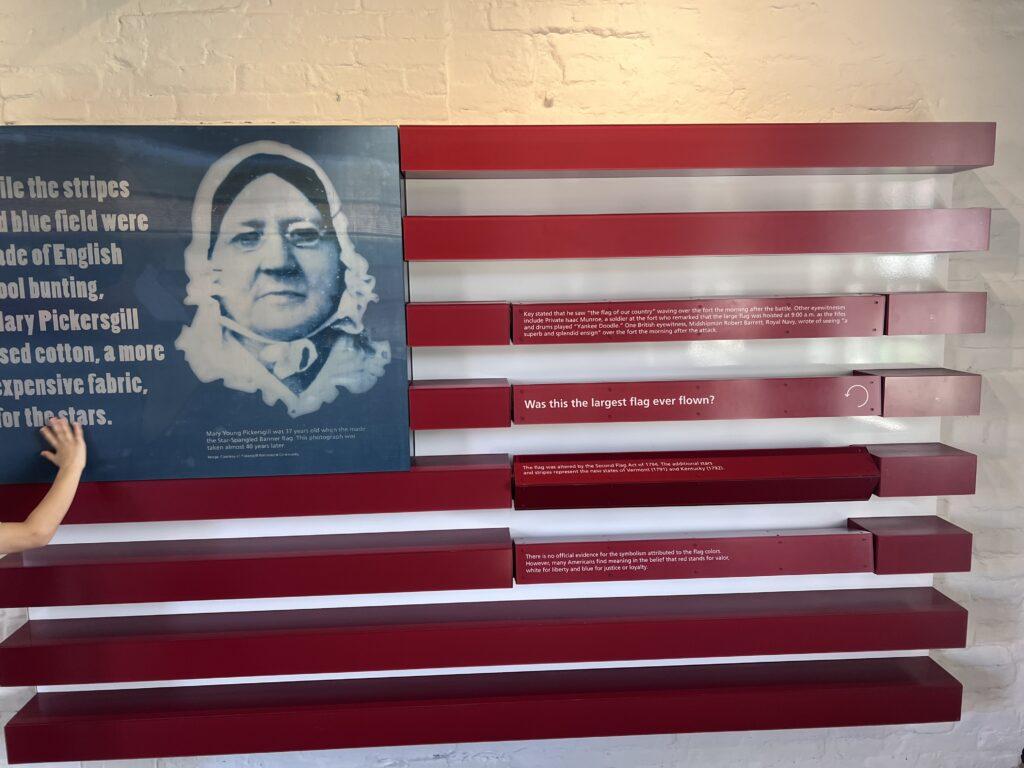
The Fort McHenry National Monument and Historic Shrine is an unforgettable place to visit. Located in Baltimore, Maryland, this iconic spot was the site of a pivotal battle during the War of 1812 and inspired Francis Scott Key to write the poem that later became “The Star-Spangled Banner,” the US national anthem.
It’s been designated as a National Historic Landmark and today it serves as both a museum and a memorial honoring those who fought for freedom during America’s formative years.
Visiting Fort McHenry is more than just a history lesson – it’s an inspiring experience that will leave you with an appreciation for the sacrifices made by brave men and women throughout American history.
Visitors to the Fort McHenry National Monument can take a guided tour of the fort and learn about its fascinating history. They can also watch a 10-minute film that gives an overview of the fort’s significance in the War of 1812 and its role in shaping the country’s national identity.
The visitor center features interactive exhibits, artifacts, and displays that showcase the life of soldiers and their families during the early years of the fort’s existence.
One of the highlights of a visit to Fort McHenry National Monument is witnessing the changing of the flag ceremony. This ceremony, which takes place every morning at the fort, involves raising the American flag and lowering the flag of the previous day in a solemn ritual that honors the nation’s history and values.
Another notable feature of the fort is its beautiful location, which offers stunning views of Baltimore’s Inner Harbor. Visitors can take a stroll along the waterfront promenade or have a picnic on the grassy areas near the fort while taking in the picturesque scenery.
When visiting, there is a ton of parking available for guests, plus lots of restrooms on-site.
There is an entrance fee of $15 per adult aged 16 and above. The monument is free for children 15 years and younger.
Whether you are into history, going for a school field trip, or just a family hangout, Fort McHenry is an amazing Baltimore Harbor attraction and is worth a visit!
18. Yale University, Connecticut
Contributed by Lyndsay from The Purposely Lost
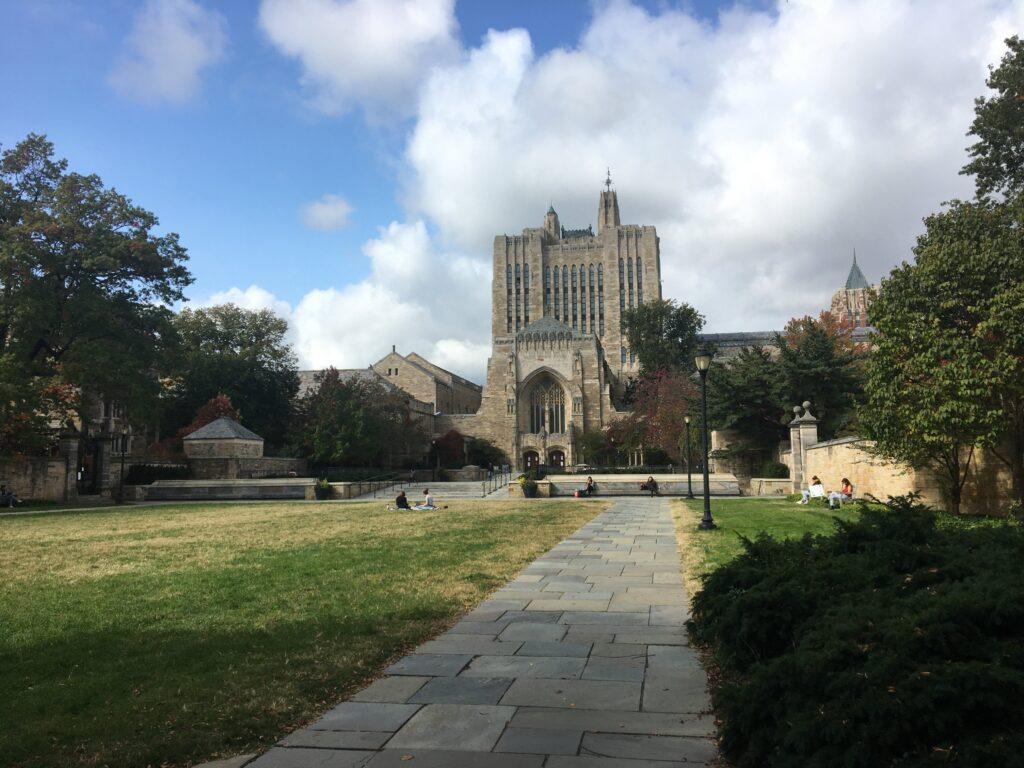
If you’re looking for fascinating historical sites to visit on the East Coast, look no further than Yale University.
As one of the oldest universities in the country, Yale’s sprawling campus is steeped in history and tradition, making it a must-visit destination for history buffs and curious tourists.
Of the many things to do around Yale, one of the most impressive landmarks to visit is the Beinecke Rare Book and Manuscript Library.
This awe-inspiring building is home to some of the world’s most valuable and rare books and manuscripts.
You can’t help but be struck by the breathtaking building, which uses pieces of Vermont marble instead of windows to illuminate the building’s interior with a soft glow.
Yale’s campus is also home to the Skull & Bones Tomb. This secret society has included three former United States presidents and several other influential Americans among its ranks over the years.
But that’s not all. With several world-renowned museums featuring vast collections of art, artifacts, and fossils, you’ll spend hours wandering around the campus.
Since Yale University is located in New Haven, Connecticut, you can take a moment to explore the city.
Grab a table at Frank Pepe’s Pizzeria Napoletana, home of some of the best pizza in the United States, shop at the Shops at Yale, or go hiking in one of the city’s parks.
19. The United States Holocaust Memorial Museum, Washington D.C.
Contributed by Taylor from Traverse with Taylor

World War II was a particularly horrible time in history, in part because of the Holocaust. This systematic murder of 12 million people, including 6 million Jews, by the Nazi party, was horrific.
At Holocaust sites all over the world, memorials and museums have been erected to honor the memory of those who were murdered.
It just so happens that one of the foremost educational and historic sites connected with the Holocaust is right here on the East Coast of the United States.
The United States Holocaust Memorial Museum, located in downtown Washington, D.C., is one of the foremost museums in the world.
It was opened to the public in 1993, and since that has amassed significant numbers of archives, artifacts, and testimonies connected to the Shoah.
EXPLORE: See Washington DC’s key attractions in this full-day tour.
This is one of the top must-see historic sites on the East Coast to visit during your time in Washington, D.C. Learn about the incredibly somber history of the Holocaust by exploring the museum’s permanent exhibition, a chronological walk through four floors of research and information.
You’ll see tons of artifacts, including a replica of a train car used to transport Jews, a bunk from the Auschwitz museum, and thousands of shoes found at the liberation of Auschwitz. In addition, you’ll hear survivor testimonies and possibly even meet one in person!
The Museum Green of Washington, D.C. is nearby, as is the Washington Monument and many other popular attractions. Though you’ll want to identify a parking garage ahead of time, as finding a spot in the city can be tough!
Entrance to the museum is free, though you do need a reserved timed ticket.
Which one of these historic sites on the East Coast are you adding to your bucket list? Let us know in the comments!
Save it for later!


Hey, I’m Yanitza 👋 Adventure Travel & U.S. Destination Specialist, travel writer, and hidden-gem hunter with over 8 years of experience helping travelers explore deeper and travel slower. I specialize in crafting authentic, stress-free adventures from small towns to scenic hikes and scuba dives. I’m a firm believer that the best stories happen when you venture beyond tourist hotspots. When I’m not planning getaways or writing travel guides, I’ll probably be home rewatching The Vampire Diaries like it’s my job and daydreaming about future adventures in Spain.

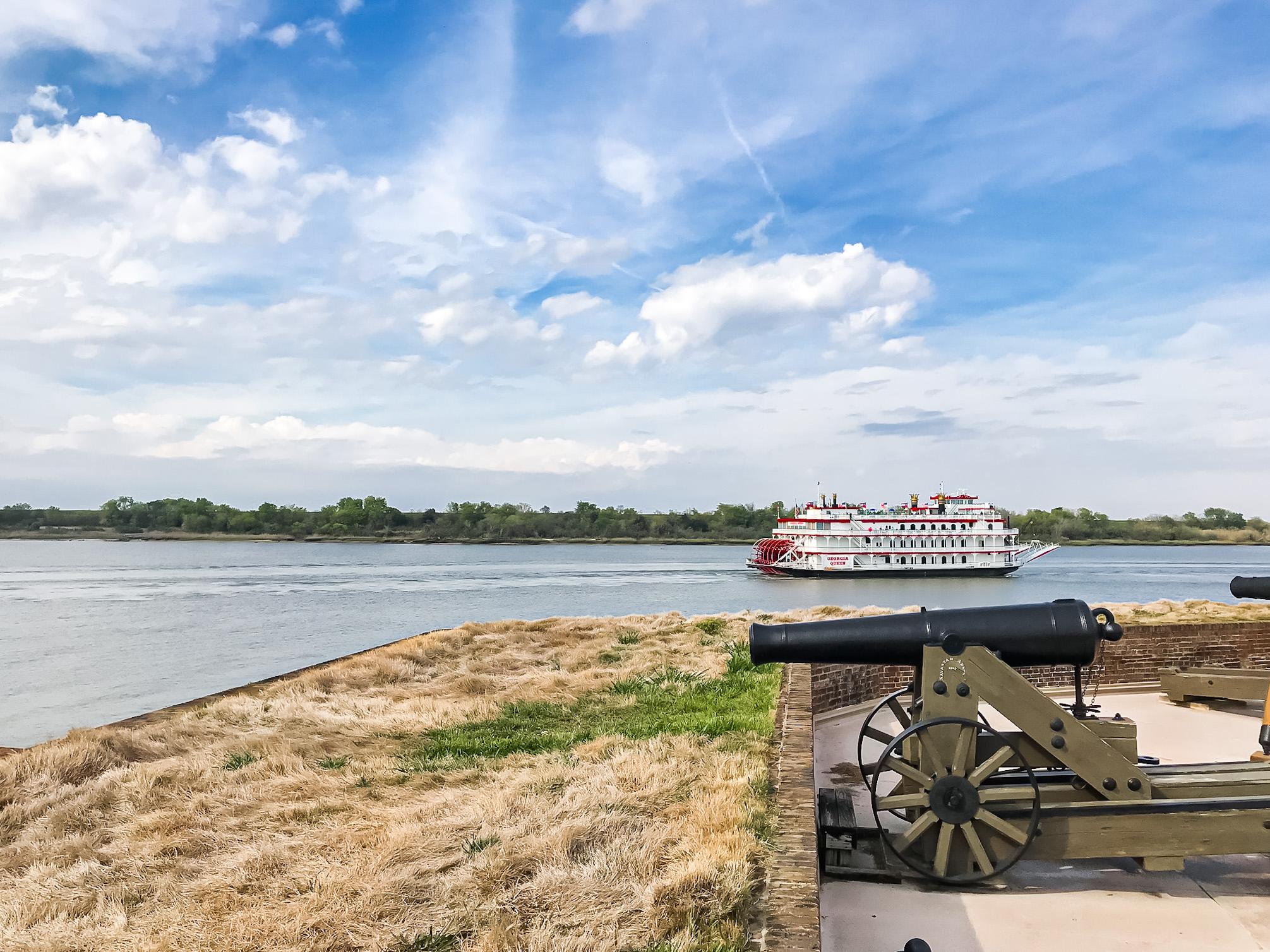
I love visiting historical sites. It’s amazing what you learn and I always try to imagine those who stood on the same place I am standing. Maybe I’ve been watching too much ‘Outlander’.
You’re not watching too much Outlander! Carlos and I are the same way! lol